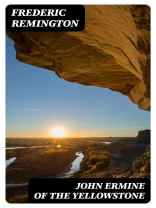Set against the backdrop of the early American West, Frederic Remington’s ‘John Ermine of the Yellowstone’ is a evocative narrative that captures the rugged beauty and turmoil of frontier life. The novel merges elements of romance, adventure, and tragedy through its vivid prose and rich imagery, offering a poignant exploration of themes such as identity, loyalty, and the clash of cultures. Remington’s style is characterized by a keen attention to detail and a deep appreciation for the landscapes he depicts, reminiscent of his visual art, providing readers an immersive experience of the natural world and its inhabitants. Frederic Remington, renowned as a painter and sculptor, was profoundly influenced by his experiences in the American West. Born in 1861, his work often reflected a passionate engagement with the themes of American expansion and the encounters between settlers and Native American tribes. His firsthand observations of life in the West deeply informed his writing, allowing him to depict authenticity in character and setting, blending historical context with fiction and enriching the narrative. ‘John Ermine of the Yellowstone’ is highly recommended for readers interested in exploring the complexities of the American West through a skilled literary lens. Remington’s combination of art and literature offers a unique perspective on a pivotal era in American history, making this novel an essential read for those who appreciate historical fiction intertwined with the beauty of storytelling.
Про автора
Frederic Remington (1861–1909) was an American painter, illustrator, sculptor, and writer who captured the fading days of the American frontier. With an eye for the drama and vigor of the Old West, Remington’s visual arts legacy is unparalleled; however, his contributions to literature, particularly through his novel ‘John Ermine of the Yellowstone’, also offer significant insights into life on the frontier. In this work, published in 1902, Remington tells the tale of John Ermine, a white child raised by Crow Indians, who must navigate the conflicting worlds of his Native upbringing and encroaching white civilization. Remington’s narrative is permeated with his intimate knowledge of Western topography, culture, and the complex interplay between nature and humanity. His literary style reflects the same textures and visceral realism that characterize his sculptures and paintings. While Remington’s artistic achievements overshadow his literary output, his novel remains a telling artifact of American literary history, granting readers a lens through which to examine the mythical and often romanticized Wild West. Remington’s works continue to be celebrated for their contribution to the American narrative and the preservation of an era that has since vanished beneath the tides of time and progress.












